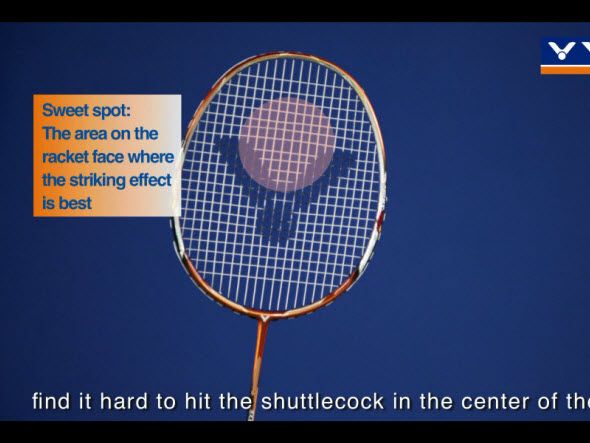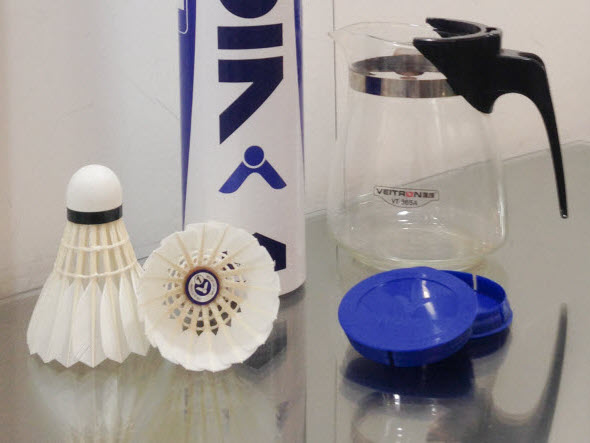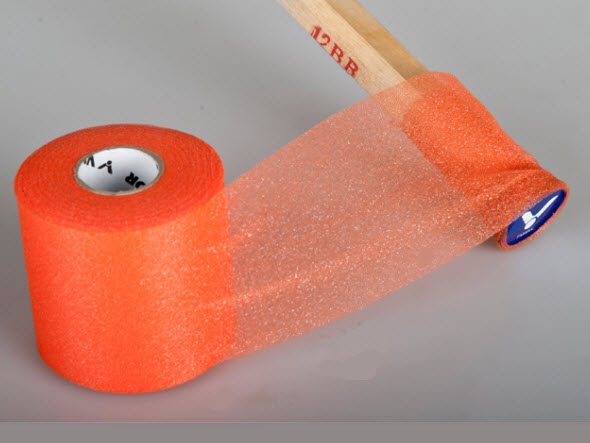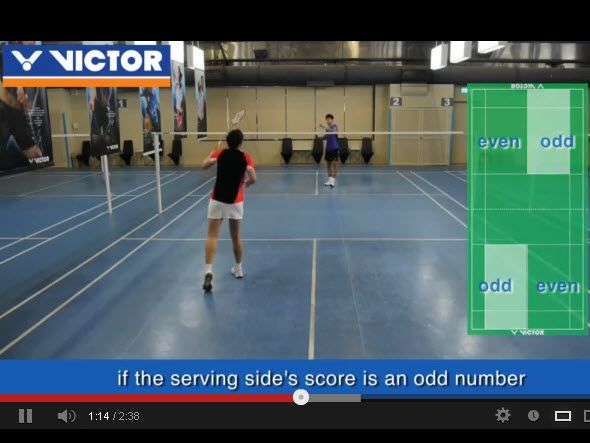Technical terms often used in badminton service faults

Any badminton novice is sure to be a bit confused by the “technical terms” he/she hears more experienced players use and they may even use them incorrectly without knowing, so today we will introduce some common basic badminton technical terms.
Let’s begin with the service action, the shot novices are most likely to be criticized or be patronized for. The most common service fouls are “racket facing up” and “above waist height.”
hat's the official terms of shuttlecock lands inside and outside?
When the serve is made the shaft must face down and the shuttlecock must be hit at a height below the waist. “Racket facing up” (Figure 1) means that the shaft and racket, that should face down, turn upwards at the moment of impact; “above waist height”(Figure 2) means that that the shuttlecock is hit at a height above waist level. These two service fouls are common in doubles play.
Three other less common fouls are “Non continuous hitting action,” that is, there is a pause or pauses in the hitting action to deceive the opponent; “foot off ground”(Figure 3)—in doubles play the service and returns are very fast so sometimes the server or receiver takes one of their feet off the ground before hitting the shuttlecock to give them greater speed;there is also “not hitting the shuttlecock head”(Figure 4) this is a deliberate foul intended to affect the normal flight of the shuttlecock. The weight of the shuttlecock is in its soft cork head; if the server hits the feather skirt it will fly in an irregular way and be harder for the opposing player to return.
Common technical term in service action
|
|
||||||||
|
|
The above rules apply in formal competitions where there’s a serve judge but even though this is the case some players still try to get around them, for example, “above waist height” is a foul often called by the serve judge.
As each player is of a different heights it’s very hard to judge exactly where “below the ribs” is unless each player wears a tightfitting shirt with a drawing of the rib cage on it. In the past it has been known for players to pull their shorts up to deceive the serve judge. Why is there this rule that requires that a serve must be hit from below the waist? This rule is in place because the higher the point the shuttlecock is hit the easier it is to hit it with a fast and straight trajectory across the net, making it more difficult for the opponent to return.
“Racket facing up” is often seen when a sudden lob to the back of the court is played in doubles play; first a player’s posture makes it seem like they will play a drop shot in front of the net but they turn their wrist quickly when they hit the shuttlecock, lobbing the shuttlecock to the back of the court, hopefully taking the opponents by surprise. However, if the action isn’t well-practiced “racket facing up” can easily occur, and also the sudden lob to the back of the court has to be a sudden; if it isn’t done well it will present the opponent with an easy point.
The requirement that the shuttlecock must be hit below waist level has caused many disputes between players and umpires, leading the BWF to introduce an experimental rule in 2013 that stipulates that the height the shuttlecock is hit when a player serves cannot exceed 110cm, reducing the difference caused by player height and making things fairer. This rule has yet to be formally adopted in competition and the BWF has also not explained how the service judge will measure this height. I have come up with an idea, that is replacing one horizontal line on the net with a bright color and marking the net posts on each side; before the match starts the serve judge can use the ruler used to measure net height to measure the height of the line.
( Edit by VICTOR Badminton )
|
Mackinglis |
| - Well-known badminton blogger - http://campus999.blogspot.tw/ |
| - Obsess in international badminton event since 2008 Beijing Olympics |
| - Specialize in analyzing world badminton players’ affair |
| - Worked in international news agency as editor and reporter |
| - Translate a lots of international badminton news and interviews |
| - Interviewed many top badminton player and coach in the word |




















